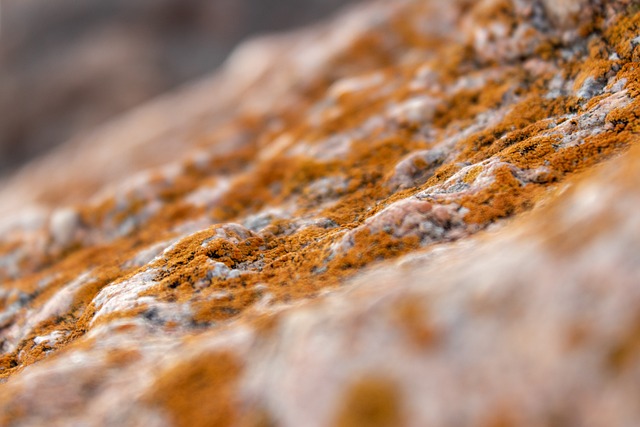Grout sealing is essential for maintaining hygiene and aesthetics in tiled spaces, especially bathrooms and kitchens, by preventing water, mold, and stains. It creates a protective barrier against moisture, dirt, and bacteria, reducing the need for frequent cleaning. Selecting eco-friendly, non-toxic sealants ensures safety and sustainability while effectively guarding against mold growth. Regular reapplication every 1-2 years maintains protection. Grout sealing, an easy process involving cleaning and applying sealer, simplifies maintenance and promotes a healthier environment.
Grout sealing is an essential step in maintaining the longevity and aesthetics of your tiled surfaces. This eco-friendly practice offers a powerful solution to prevent mold, stains, and bacteria growth, ensuring your spaces remain clean and healthy. In this comprehensive guide, we’ll explore the fundamentals of grout sealing, unravel common issues caused by unsealed grout, and delve into the advantages of choosing eco-friendly options. From selecting the right sealant to application tips and maintenance, we’ve got you covered for a seamless, durable, and environmentally conscious result.
Understanding Grout Sealing: The Basics

Grout sealing is a critical process in maintaining the hygiene and aesthetics of your tiled surfaces, especially in areas prone to moisture like bathrooms and kitchens. It involves applying a protective coating directly onto the grout lines to prevent water, stains, and mold from seeping in. This is crucial as grout, due to its porous nature, can absorb water and substances that lead to the growth of mold and bacteria, as well as cause unsightly stains over time.
By sealing the grout, you create a barrier that repels water and blocks out dirt and contaminants. This not only enhances the visual appeal of your tiles but also extends their lifespan by protecting them from the elements. Grout sealing is particularly essential in preventing mold growth, which can be harmful to both the health of residents and the structural integrity of your home or building.
Common Issues with Unsealed Grout

Unsealed grout can lead to a host of issues that not only compromise the aesthetic appeal of your space but also pose potential health risks. Over time, water seeps into the tiny gaps between tiles, fostering an ideal environment for mold and mildew growth. These microscopic organisms not only cause unsightly discoloration but also release harmful spores, which can trigger allergies or respiratory problems. Moreover, unsealed grout is susceptible to staining from everyday substances like soap scum, food, and beverages. This results in a constant need for cleaning, which can be time-consuming and environmentally detrimental if harsh chemicals are used.
Grout sealing is an effective solution to mitigate these issues. By applying a protective layer over the grout, sealing prevents water penetration, thus hindering mold and mildew growth. It also repels stains, making post-cleaning maintenance significantly easier and less reliant on toxic substances. In essence, grout sealing isn’t just about enhancing the visual appeal of your tiled surfaces; it’s a proactive step towards maintaining a healthier, more sustainable living environment.
Benefits of Eco-Friendly Grout Sealing

Grout sealing is an eco-friendly approach that offers numerous advantages for your home or commercial space. By applying an environmentally safe sealant, you create a protective barrier against moisture and dirt, which are primary contributors to grout damage and discoloration. This method significantly reduces the need for frequent cleaning and maintenance, as the sealant repels water and stains, keeping grout lines fresh and looking like new.
One of the key benefits is its ability to prevent mold growth, a common issue in humid environments. Mold not only poses health risks but also causes unsightly discoloration and deterioration of grout. Eco-friendly grout sealing provides a long-lasting solution by creating an impenetrable layer that blocks moisture and prevents mold spores from settling. This sustainable practice ensures a healthier living or working environment while preserving the aesthetics of your tiled surfaces, making it an ideal choice for those seeking both style and sustainability in their spaces.
Choosing the Right Eco-Friendly Sealant

When it comes to eco-friendly grout sealing, selecting the right product is paramount in ensuring both effectiveness and sustainability. Look for sealants that are explicitly marketed as non-toxic, water-based, and free from harsh chemicals like formaldehyde or VOCs (Volatile Organic Compounds). These products not only minimize environmental impact but also promote a healthier living space by eliminating harmful fumes.
Choosing an eco-friendly grout sealant with mold and stain-preventing properties is particularly important for maintaining hygiene in high-moisture areas like bathrooms and kitchens. Water-repellent formulations create a protective barrier, preventing moisture penetration that can lead to mold growth and staining. This durable finish not only preserves the aesthetic appeal of your tiles but also contributes to energy efficiency by reducing condensation on surfaces.
Application Process and Tips

The application process for grout sealing is a straightforward yet meticulous task, crucial for maintaining a clean and healthy bathroom or kitchen. Begin by thoroughly cleaning the grout areas using a mild detergent and a damp sponge to remove any dirt or debris. Once dry, apply an eco-friendly grout sealer using a small brush or spray bottle. Ensure even coverage, focusing on corners and crevices where moisture can accumulate. Let the sealer dry according to the manufacturer’s instructions before reintroducing water into the space.
Tips for successful grout sealing include using high-quality, water-based sealers that are safe for both interior and exterior applications. Avoid porous grout materials that may absorb the sealer improperly. Regular maintenance is key; reapply the sealer every 1-2 years or as recommended by the product to sustain protection against mold and stains. Always follow safety precautions, wearing gloves and ensuring adequate ventilation during application to prevent any adverse reactions.
Longevity and Maintenance of Sealed Grout

When it comes to the longevity and maintenance of sealed grout, proper care is essential for preventing mold and stains. Grout sealing is a game-changer in ensuring your bathroom or kitchen remains spotless and healthy. By creating an impermeable barrier, sealed grout acts as a shield against moisture, dirt, and bacteria, which are the primary causes of mold growth and unsightly stains. Regular cleaning with mild detergents becomes easier as sealed grout repels contaminants, requiring less effort to maintain its sleek appearance.
Over time, even with proper sealing, grout may require touch-ups or reapplication due to normal wear and tear. This maintenance is straightforward and ensures that the protective layer remains effective. Many eco-friendly grout sealing products are now available, offering both durability and sustainability without compromising on performance. These products not only prevent mold and stains but also contribute to a healthier living environment and a reduced carbon footprint.
